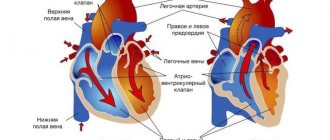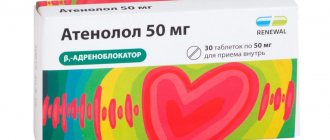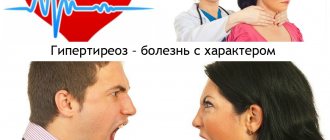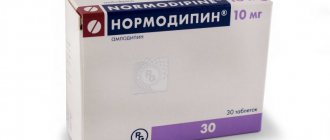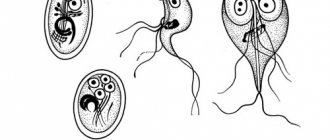- Gallery
- Reviews
- Articles
- Licenses
- Vacancies
- Insurance partners
- Partners
- Controlling organizations
- Schedule for receiving citizens for personal requests
- Online consultation with a doctor
- Documentation
Increased intracranial pressure occurs with an increase in the volume of brain tissue, cerebrospinal fluid, or a voluminous pathological process in a relatively closed cranial cavity.
You need to imagine that the head is, first of all, the tightly connected bones of the skull, inside which the brain is located. And naturally, an increase in internal volume increases pressure on the bones of the skull and, accordingly, on the tissues and vessels of the brain.
The accumulation of cerebrospinal fluid (CSF) in the cranial cavity is called hydrocephalus. It can be either external, i.e. accumulation of cerebrospinal fluid around the brain and internally (enlarged cerebral ventricles). This pathology can occur at any age - from newborns to the elderly. Each age interval has its own causes, there are age-related characteristics of manifestations and age-related characteristics of treatment.
What is increased intracranial pressure?
Inside the brain there is a system of interconnected ventricles, which are also filled with cerebrospinal fluid (CSF). This protects the human brain from injuries, concussions, as much as possible. The pressure of cerebrospinal fluid on brain structures is called intracranial pressure. Exceeding the permissible norms entails a number of consequences.
The main question for parents is what are the signs of intracranial pressure in a child, and what threat does this pose to the child?
What complications can there be in children? If left untreated, increased intracranial pressure can lead to the following consequences: the occurrence of epileptic syndrome, blurred vision, mental disorders, strokes, disorders of consciousness, breathing problems, weakness in the limbs, etc.
What should parents of a child with this diagnosis know? ICP is not a disease, but only a symptom, a consequence of various diseases. There are several misconceptions among parents regarding increased intracranial pressure. For example, the fact that this is an incurable condition. However, with timely treatment, the child’s recovery is possible. The main thing that needs to be done is to consult a specialist in time and follow the doctor’s instructions.
Examination methods
Unfortunately, parents do not always immediately realize that their child has increased intracranial pressure. If the form is mild and rare, it can only be detected when examined by a pediatrician. At the first suspicion, the doctor should prescribe additional examinations to identify signs of intracranial hypertension. Consultation with other specialists, such as a neurologist and ophthalmologist, may be required.
In the case of a traumatic brain injury, the examination is carried out by a neurosurgeon. In addition, it will be necessary to take additional tests and conduct a thorough examination of the child.
The following methods are used to make a diagnosis:
- They take blood for a general analysis. Detected peripheral leukocytosis will indicate the presence of infection in the body and an increase in the number of neutrophil injections. confirms bacterial infection.
- A biochemical study of the cerebrospinal fluid is performed. This examination is necessary for brain injuries or neuroinfections.
- Ultrasound scanning of the brain helps detect defects in the structures of the brain and spinal cord. In combination with several other studies, this helps to understand the characteristics of the pathology.
- Electroencephalography is recommended. This is an auxiliary method for confirming the presence of abnormalities in the brain.
- Performing computed tomography and magnetic resonance imaging.
There are also the following methods with which you can check whether intracranial pressure is increased - neurosonography, Dopplerography, lumbar puncture and measuring the pressure inside the cranium.
Head circumference measurement
This is an essential activity to understand how your baby's brain is developing. At the slightest deviations and an increase in head circumference, the doctor will prescribe other examinations to exclude serious pathologies.
It allows you to describe the state of brain structures using high-frequency waves. This method allows you to detect even minor damage and injuries. Moreover, the examination itself is completely safe for the child.
Neurosonography
This research has become widely practiced only recently. This procedure allows you to examine the newborn's brain using ultrasound. This was previously prescribed in cases where the child was in serious condition, but is now common practice. Neurosonography makes it possible to detect both congenital and acquired brain injuries after the birth of a child.
The procedure takes no more than 10 minutes, which provides all possible information about the state of the brain. It takes much more time to decipher the received data. The work requires additional research and comparison of external factors.
It is believed that neurosonography is completely safe for the baby.
Symptoms of increased intracranial pressure
Increased intracranial pressure in children, symptoms of which can appear in the first minutes and hours after birth, often leads to the development of serious complications.
When parents may suspect something is wrong:
In young children:
- The baby constantly cries and does not calm down;
- Lack of thirst in the child, reluctance to drink;
- The baby is irritated by bright lights and sharp sounds;
- The child burps frequently and profusely;
- The baby's fontanel bulges;
- The baby's chin is shaking;
- Rapid head growth (this is due to stagnation of venous blood);
- The child throws his head back.
In older children
- Severe headaches;
- Nausea, vomiting;
- Increased fatigue, weakness;
- Drowsiness;
- Tearfulness, irritability;
- Apathy;
- Double vision.
Knowing the key signs of the disease, you can establish the correct diagnosis in the early stages and prescribe the correct treatment for your child. Even if you have only one of the listed symptoms, you need to immediately contact a neurologist! The sooner your baby receives help, the fewer consequences it will have for the child’s body in the future.
Diagnosis of intracranial pressure
Before prescribing treatment for your child, we perform a comprehensive neurological examination. It includes:
- Collecting anamnesis (conversation with the mother, studying the child’s medical record, history of pregnancy and childbirth and the results of previous studies);
- special neurological tests;
- active and muscle tests;
- reflex diagnostics;
- local palpation examination of the spine and musculoskeletal system.
In addition to the main examination, if necessary, the doctor may prescribe:
- NSG (neurosonography, ultrasound of the brain);
- MRI;
- Ultrasound;
- X-ray;
- Lab tests;
- EEG;
Treatment of intracranial pressure
To treat our little patients, we use only painless, gentle treatment methods that do not cause discomfort to the baby.
We use methods:
- Transcranial micropolarization (TCMP) is the effect of a low-power direct electric current (less than 1 mA) on brain tissue in order to activate individual brain centers (speech, motor, psychomotor, etc.);
- Manual therapy;
- Osteopathy - treatment by the hands of a doctor, a gentle effect on the musculoskeletal system, nervous and vascular systems, internal organs;
- Acupuncture - exposure to biologically active points with microneedles;
- Pharmacopuncture - the introduction of medicinal drugs of natural origin to the source of the problem;
- Isometric kinesiotherapy - individual gymnastic techniques/exercises, according to indications, with elements of joint massage;
- Isometric kinesiotherapy using the Exart installation;
- Ozone therapy - treatment with active oxygen;
- Physiotherapy;
- Physiotherapy with enzyme preparations;
- Medical massage;
- Therapeutic droppers;
- Hirudotherapy - treatment with leeches;
- Botulinum therapy - treatment with botulinum toxin;
- Tsubotherapy is a gentle effect on the reflex points of the body.
Remember that with increased intracranial pressure in children, treatment should be comprehensive, individual and under the supervision of a doctor.
Main directions of treatment
As soon as it is determined that the child has increased intracranial pressure, consultation with the attending physician is necessary. After conducting the necessary examinations and tests, he will analyze the child’s condition and decide what to do next and what treatment regimen to prescribe.
Treatment of the disease can begin only after eliminating the causes that provoked it.
Otherwise, it will be ineffective and the likelihood of recurrence of attacks will continue. As a rule, therapy lasts several months.
The following elements are often prescribed in complex therapy:
- Taking diuretics. They help quickly remove excess fluid from the body. Harmful substances that improve the child’s well-being are removed along with it. These include products such as Furosemide, glycerin, a decoction of blueberry and parsley leaves.
- Using nootropics. They stimulate brain function. These are Actovegin, Pantogam and other drugs. They are prescribed in courses.
- Carrying out a relaxing massage. Improves blood flow and strengthens the walls of blood vessels. Children require at least 10 procedures several times a year - 2-3 times a year for 10-14 procedures.
- Procedures using tempered water, which have a beneficial effect on the movement of cerebrospinal fluid.
- Use of antiviral and antibacterial drugs.
- Use antiemetics if necessary.
- Taking a balanced multivitamin complex.
- Sedatives are prescribed to relieve nervousness.
In addition, it is recommended to follow the diet to ensure that it contains all the microelements the child needs. It is also important to follow a daily routine, take your child out for a walk and put him to bed on time.
The most extreme measure used in cases of brain injury is surgery. The operation is performed to restore the correct position of the bone structures and remove hematomas inside the skull.
Diseases caused by increased intracranial pressure
Our pediatric neurology department will help you not only make a correct diagnosis, but also undergo a course of treatment if your child has:
- Hyperactivity (attention deficit hyperactivity disorder, ADHD);
- Cerebral palsy (cerebral palsy);
- Autism;
- Delayed psychomotor development;
- Delayed speech development;
- Speech defects;
- Stuttering;
- Nervous tics;
- Enuresis;
- Sleep disturbances (sleeps poorly, sleeps little, wakes up frequently, does not fall asleep for a long time);
- Hypertonicity;
- Pyramid syndrome (pyramidal insufficiency syndrome);
- Hypertensive syndrome;
- Hydrocephalus (hydrocephalic syndrome, dropsy of the brain);
- Perinatal encephalopathy (perinatal damage to the central nervous system, PEP, PPCNS);
- Minimal brain dysfunction (MCD).
Causes of intracranial pressure:
- Birth or traumatic brain injury;
- Prematurity, pathologies during pregnancy or childbirth;
- Untimely fusion of the skull bones in a child;
- Benign brain tumors, which lead to increased blood pressure and changes in brain structures;
- Malignant brain tumors;
- Meningitis;
- Encephalitis;
- Toxic cerebral edema;
- Hydrocephalus;
- Genetic abnormalities and defects of the cerebrospinal fluid tract;
- Traumatic brain injury;
- Intracerebral hemorrhage.
What can cause brain pathologies?
The main cause of ICP in infants is hydrocephalus, which occurs due to increased production of cerebrospinal fluid.
As a result, excess fluid accumulates in various parts of the brain, disrupting the normal patency and absorption of cerebrospinal fluid. Typically, hydrocephalus in the fetus begins to develop in the last months of a woman’s pregnancy. Symptoms of this congenital disease can be detected immediately after birth. If treatment is started in a timely manner, there is every chance that the child’s cranial pressure will soon return to normal.
There are cases when cranial pressure in an infant increases gradually, the reason for this may be:
- a genetic or chromosomal disorder that causes congenital neurological defects;
- very early birth, when the child’s cerebral cortex has not yet fully formed;
- difficult pregnancy with pathologies;
- intrauterine infectious disease transmitted to the child from the mother;
- birth injuries to the head or concussion.
Among the diseases accompanied by the development of ICP, the most common are:
- encephalopathy and hydrocephalus;
- neuroinfectious diseases (meningitis, encephalitis, etc.);
- severe disturbance of metabolic processes in the body, leading to diabetes mellitus and hypothyroidism;
- brain tumor.

